Lenovo IdeaPhone P700i: a long-lived smartphone at a reasonable price
 In November, Lenovo begins selling mobile phones in Russia. From the 20th day (pre-order is available today), while only in the MVideo chain of stores will two models of Lenovo smartphones on the Android platform be presented: IdeaPhone P700i with a four-inch display and IdeaPhone S880 with a five-inch. Over the past three weeks, I met with a more compact and inexpensive (8990 rubles) two-SIM P700i, using it as the main phone, then as an additional one, and am ready to share the test results with you.
In November, Lenovo begins selling mobile phones in Russia. From the 20th day (pre-order is available today), while only in the MVideo chain of stores will two models of Lenovo smartphones on the Android platform be presented: IdeaPhone P700i with a four-inch display and IdeaPhone S880 with a five-inch. Over the past three weeks, I met with a more compact and inexpensive (8990 rubles) two-SIM P700i, using it as the main phone, then as an additional one, and am ready to share the test results with you.In short, I, accustomed to spending some more money on mobile devices, initially saw some downgrade in the transition to the P700i. Well - a smaller screen, lower performance, and so on. It is possible that the same thoughts will come to the mind of many future buyers of this IdeaPhone. As a result of the test, I have very different impressions.
Thanks to the 4-inch display, the phone lies perfectly in the hand. The performance of the dual-core processor is more than enough for active use, with many running programs and constant switching between them. And, most importantly - thanks to the capacious battery and a relatively economical platform, the P700i lives without charging longer than any other Android-based smartphone (and not only), from those that fell into my hands. And in some disciplines of battery all-around Lenovo smartphone shows simply phenomenal results.
UPD. Lenovo smartphones can already be purchased on the MVideo network !
Specifications:
Processor : Platform MTK6577 - dual-core processor ARM Cortex A9 with a frequency of 1 GHz
Memory: 512 MB RAM, 4 GB ROM, microSD slot up to 32 GB
Graphics accelerator : PowerVR SGX531
Screen : IPS, 4 inches, 800x480, multi-touch up to five touches
Battery : 2500 mAh, talk time up to 22 hours
Radio modules: WiFi, Bluetooth, GPS, FM Radio
Camera : 5 MP, front 0.3 MP
Android version : 4.0.4
Dimensions : 125x64x12 mm
Weight : 162g
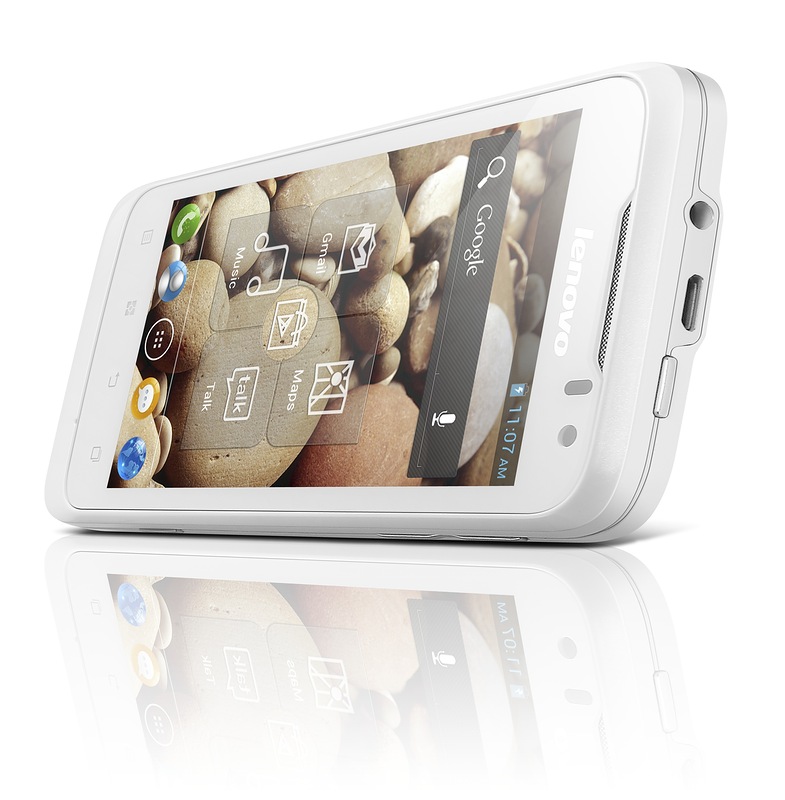
Before talking about the smartphone, it should be noted that Lenovo is not new to this industry. The company has been producing phones under its own brand for more than 10 years, but until recently they were available only in China. There, Lenovo mobile devices are one of the most popular, and they are presented in a much larger assortment.
Why is Lenovo starting to sell smartphones outside of China just now? Everything is simple here: those who are familiar with Chinese models imported here know that in this country almost all “smartphone” services are local, not represented outside its borders. Own Facebook and VKontakte, own application stores, search services, messaging networks and more. Adapting hardware that is generally the same for the whole world is easy, but the situation with software is more complicated.
Sales in Russia do not begin with flagship models, but with two very balanced ones in price and performance. In the foreseeable future, the lineup will expand - as they say, stay tuned.
Look and Feel, calls and SMS The

phone is available in two colors - coal black and completely white. I got exactly the white version. The case is strong, absolutely not easily soiled, with a corrugated surface of the back cover. On the front panel there are four touch buttons (settings menu, home, back, list of recent applications), a speaker in a small recess, covered with a silver mesh.
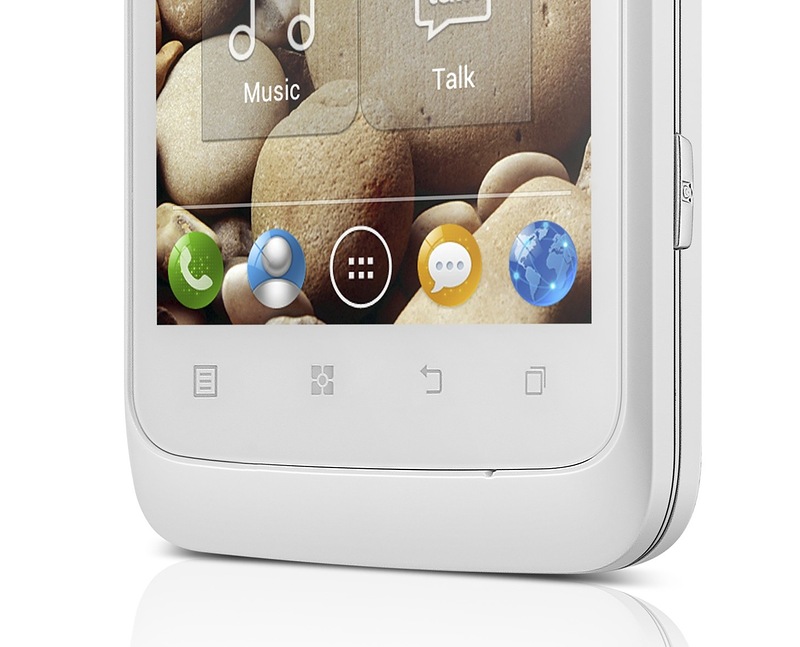
On the sides are the power and volume buttons (on the right, which fans will not like to flip through the text in the readers with buttons), a separate on-off camera key. The headphone jack is located on the top, there is also a microUSB port.

The back cover is removed from the latches with little effort, under it is a huge (by the standards of the phone) battery of 2500 mAh and a single node for two SIM cards and a microSD card. Despite so much compact placement of holders for full-size SIMs, they are inserted and removed without any problems. Only one of the two slots provides work in 3G networks (the second, the one on top is 2G Only), so it is recommended to insert a SIM with unlimited Internet into it.
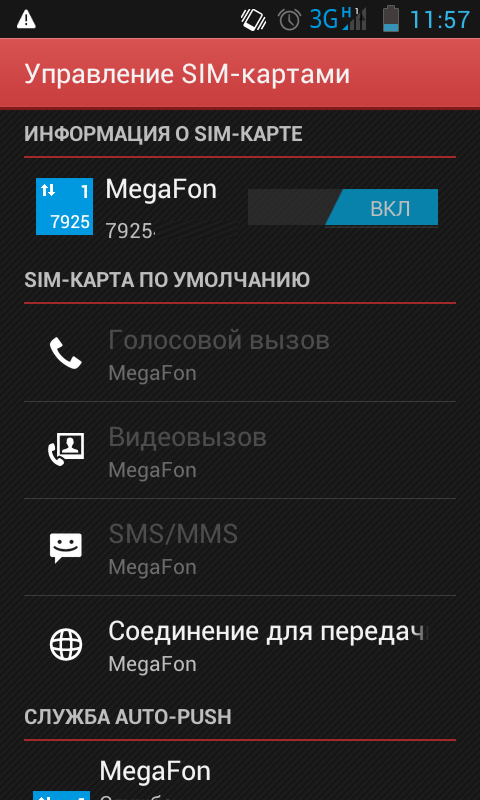
I use the phone mainly to access the network, the proportion of calls and SMS is relatively small. According to the test results, I can say that working with two SIM cards is organized very logically. For calls, sms and the Internet, you can set both the default SIM and the choice for each event. One of the two cards can be disabled in the settings menu. There is also a useful option when working on the Internet via EDGE / GPRS: in this mode, by reducing the data transfer speed, you can ensure the subscriber is available for incoming calls.

For SMS, next to each message it is displayed through which operator it was received or sent. You can receive a message from one number and send a response from another - if you are planning, for example, to change the operator.
Interface, proprietary add-ons
This is how the main IdeaPhone P700i home screen looks, with Lenovo's proprietary add-on (though slightly adjusted in favor of the programs I often use).
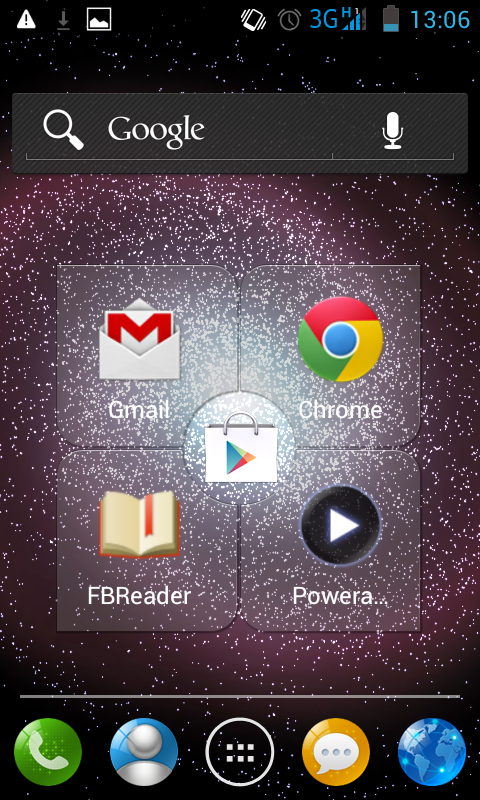
In principle, this add-on is the main difference from the "clean" Android interface. Lenovo used its own icons for applications, but in general, all the basic elements are in place. There are two important exceptions - WiFi Tethering mode is displayed in a separate application, as well as information about low battery. If I have no complaints about the first, then the additional utility for switching energy saving profiles is useful, but it is the only one that suffers from the quality of translation into Russian. Another utility allows you to take notes and is equipped with a widget on the home screen:

Performance
I’ll start with the results of the Quadrant synthetic test:

These tests allow you to evaluate the phone’s performance compared to competitors, but for me the speed of everyday work was more important - switching between applications, downloading data from the network and more. For all the time of use, I have never encountered "brakes". Unless the video in 720p resolution did not play as smoothly as we would like. Otherwise, a dual-core GHz processor is enough. Verdict: enough power :)
Battery life
So I got to the most interesting. Autonomy, in principle, is almost the main problem of modern smartphones, and, frankly, it’s not entirely clear to me why the screen resolution is increased, and the cores of processors are added. As a fan of computer hardware, I have a legitimate desire to use all these features, which is called “full” - keep Skype and IM + with ICQ in the background, update data from social networks in relevant applications, check email in Push-mode, well Weather widget where you can install. And for some reason, it turns out that most of the “flagships” in this “all inclusive” mode do not survive until dinner.
With the IdeaPhone P700i, it’s a different situation: in this mode (two SIM cards, account synchronization is turned on, two email accounts in Push mode, Facebook and Vkontakte clients, etc. from the standard set) live on average two days. Something like this (graph from Battery Monitor Widget Pro from morning to evening):

I also tested the phone in two special modes: The
second phone. One SIM card, data transfer and radio modules are turned off, one or two calls and the same number of SMS per day. Result: 9 days 16 hourswith a discharge of up to 4%! During this time, the phone’s screen was turned on for a total of less than three hours, so this test is more likely to work on standby time. Verdict: such an Android-smartphone can be considered both as the main device and as a backup - to always stay in touch. A couple of years ago, I would rather consider non-smartphones as my second phone. Now you can buy a very powerful device at a reasonable price that automatically picks up your contact database, and at the same time works even longer than a typical “stupid” mobile phone. Excellent!
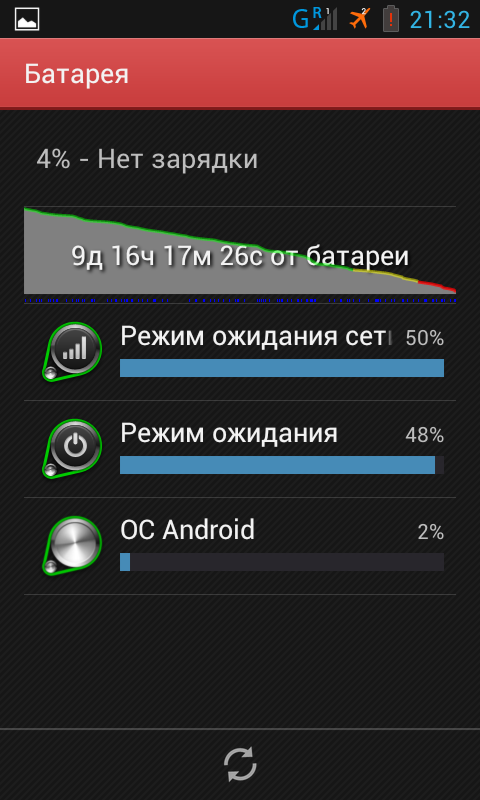
Access point. One SIM card in “Only 3G” mode, Internet distribution via WiFi is turned on, the device is not used for other tasks. Result: 7 hours 26 minutes. For the distribution of cellular Internet, there are specialized devices, only now they work for a maximum of 4 hours. The fact that the IdeaPhone P700i was able to almost double this figure is already excellent. But immediately I want to clarify that I conducted the test in two modes. The first is the distribution of the Internet to the second smartphone and tablet. Both devices were used irregularly and did not constantly request data from the P700i. In two hours of working in this mode, I received a discharge from 100% to 89%.
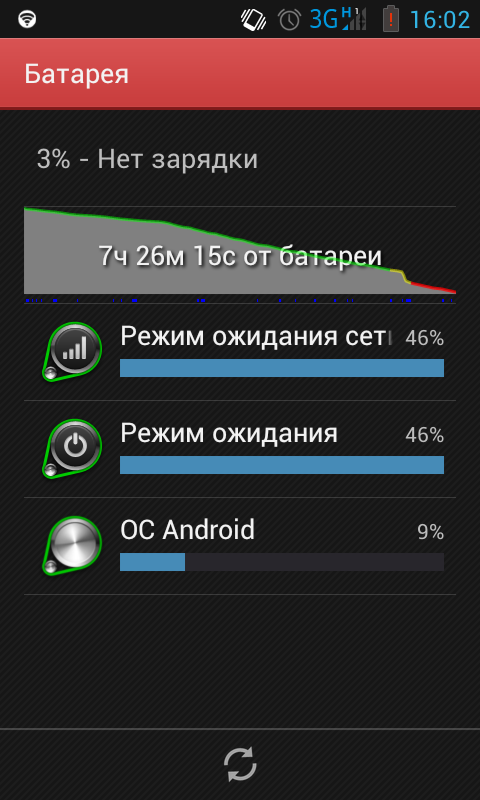
Then it was decided to complicate the test, and a laptop was connected to the access point, on which, for fidelity, the torrent client was launched. This is the only test during which the phone noticeably (up to 35 degrees according to the battery sensor) warmed up, which did not prevent it from constantly transmitting data at a speed of about megabits per second throughout the entire time. Another 5.5 hours in such a tough mode - and the battery runs out to 3%. Verdict: even when distributing the Internet constantly, but in a sparing mode, the P700i will be able to provide access to the network to other devices throughout the day.
In video playback mode (standard resolution, brightness 80%, one SIM card, data transfer is disabled). Result: 9 hours 20 minutes .
Conclusion
At a cost of just under 9 thousand rubles, the IdeaPhone P700i turned out to be very balanced, quite powerful and very convenient to use. I personally didn’t like the camera, though it is equipped with autofocus optics, but it lacks a flash and the quality of pictures does not stand out. The rest is an excellent mobile phone for the money, with outstanding battery life. For those who need a larger screen, the S880 5-inch “cover” will also be on sale:
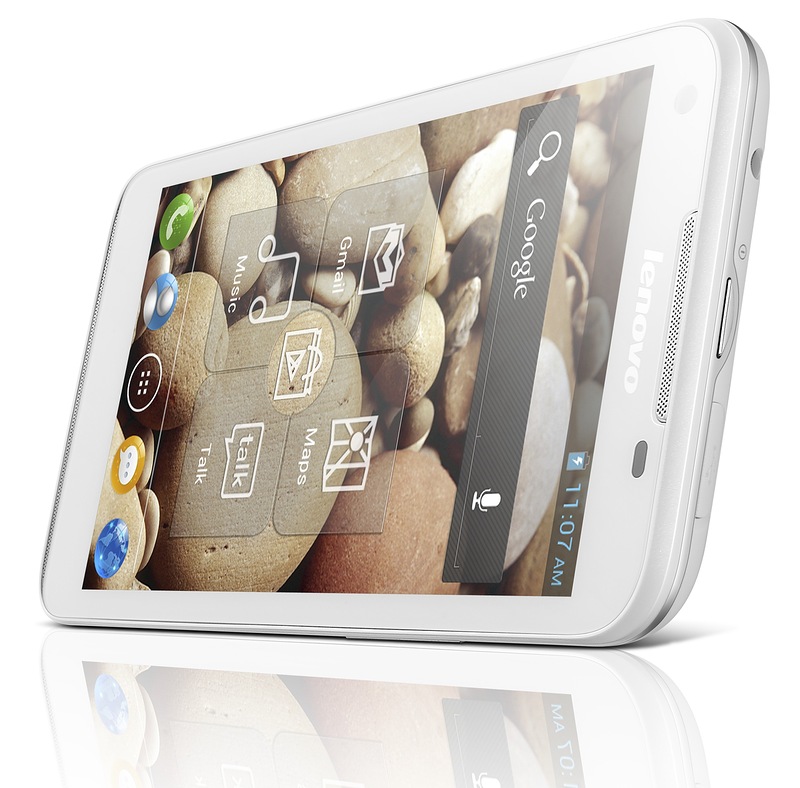
It costs more (12,990 rubles), is equipped with a single-core processor with a frequency of 1 GHz and has a screen resolution identical to the P700i - 800x480 pixels. A detailed review of the model can be found on the EnjoyIT website and on Hi-Tech.Mail.ru .
In this review, I tried to show the main features of the phone, first of all - decent battery life and sufficient performance. Naturally, during my acquaintance, I also used GPS navigation, listened to music (with decent quality in the headphones), watched videos and much more. I am ready to answer any questions on the IdeaPhone P700i in the comments.
